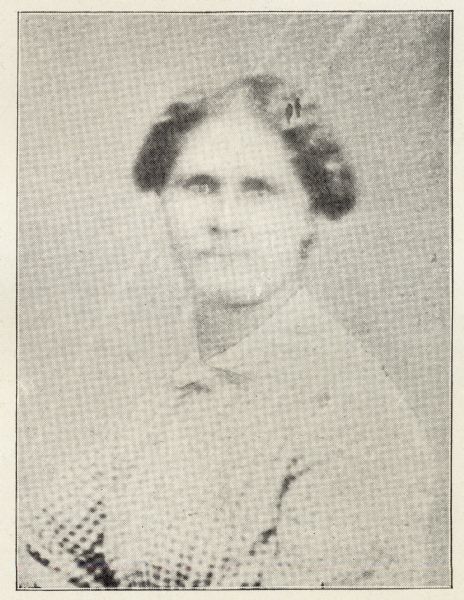Caroline Quarlls[1] (later Quarlls Watkins) is widely recognized as the first enslaved person to migrate through Wisconsin using the Underground Railroad, reaching Canada and freedom in 1842. Born in 1826 in St. Louis, Missouri, Quarlls decided at age 16 to escape slavery, leaving her home on July 4th, 1842. She traveled by steamboat from St. Louis to Alton, Illinois, and next by stagecoach to Milwaukee.[2] In Milwaukee, local barber Robert Titball feigned assistance (and later betrayed her), but aid arrived in the form of Asahel Finch of the law firm Lynde and Finch (who famously hid her under a barrel), Westsider Samuel Brown, and an unnamed African American boy. Brown transported Quarlls to the home of Lucinda and Samuel Daugherty in Lisbon, Waukesha County.[3] She next traveled with Lymon Goodnow by horse and carriage via key “stations” on Wisconsin’s Underground Railroad: first through Prairieville (now Waukesha), and then to Spring Prairie and Gardner’s Prairie near Burlington, both in Walworth County. In the following weeks they traveled through Illinois, Indiana, and Michigan, pursued throughout by slave hunters and lawyers. In August, Quarlls crossed the Detroit River, arriving safely in Sandwich (now Windsor), Ontario, Canada.[4] She then worked in service, attended school, and married Alan [Allen] Watkins, himself an escaped former slave, with whom she had six children. She also corresponded with Goodnow.[5] She died in Sandwich, Canada in March 1886.[6]
Footnotes [+]
- ^ Various spellings of “Quarlls” are found in different sources; this spelling used here is understood to be the one used by Caroline Quarlls Watkins and descendants. Julia Pferdehirt, Caroline Quarlls and the Underground Railroad (Madison, WI: Wisconsin Historical Society Press, 2008), 2 and e-mail message to author from Kimberly Simmons, June 24, 2015.
- ^ Caroline Quarlls Watkins to Lyman Goodnow, letter April 27, 1880, Caroline Quarlls / Allen Watkins Underground Railroad Collection, Civil War Museum Archives, Kenosha, WI. Some of her own words describing how she prepared and packed for the escape were “I got the box out of my masters store room aand [sic] hid it in a cherry hedge.”
- ^ John Nelson Davidson, Negro Slavery in Wisconsin and the Underground Railroad (Milwaukee: Parkman Club, 1897), 49; Genevieve G. McBride, On Wisconsin Women: Working for Their Rights from Settlement to Suffrage (Madison: University of Wisconsin Press, 1993), 197.
- ^ Many sources describe travel and abolitionists’ aid; see for example, Chauncey Olin, A History of the Early Anti-Slavery Excitement in the State of Wisconsin from 1842 to 1860, Microfilm 300, Wisconsin Historical Society, Madison and Western Historical Company’s The History of Waukesha County, Wisconsin….(Chicago, IL: Western Historical Company, 1880), 457-466.
- ^ Quarlls Watkins to Goodnow letters April 17 and 27, 1880.
- ^ Kimberly Simmons, e-mail message to author, June 24, 2015.
For Further Reading
Davidson, John Nelson. Negro Slavery in Wisconsin and the Underground Railroad. Milwaukee: Parkman Club, 1897. Available online at http://www.wisconsinhistory.org/turningpoints/search.asp?id=44, accessed November 9, 2015.
Frost, Karolyn Smadz, and Veta Smith Tucker, eds. A Fluid Frontier: Slavery, Resistance, and the Underground Railroad in the Detroit River Borderland. Detroit, MI: Wayne State University Press, 2016.
Pferdehirt, Julia. Caroline Quarlls and the Underground Railroad. Madison, WI: Wisconsin Historical Society Press, 2008.
Western Historical Co. The History of Waukesha County, Wisconsin. Containing an Account of Its Settlement, Growth, Development and Resources; an Extensive and Minute Sketch of Its Cities, Towns and Villages—Their Improvements, Industries, Manufactories, Churches, Schools and Societies; Its War Record, Biographical Sketches, Portraits of Prominent Men and Early Settlers; the Whole Preceded by a History of Wisconsin, Statistics of the State, and an Abstract of Its Laws and Constitution and of the Constitution of the United States. Chicago, IL: Western Historical Company, 1880.
See Also
Explore More [+]
Understory
Learning More about Quarlls
There is more to be learned about Quarlls’ life and her escape from Milwaukee. The Burlington Historical Society, Burlington, Wisconsin, has some details.[1] We still do not know much about Quarlls’ brief time in the city of Milwaukee, which was dramatic and interesting. Who betrayed or assisted her (especially the two African American males, about whom less is written than the white males)? What impact did this episode have on the later political positions of Milwaukeeans as the crisis of abolition and the Civil War broke out?
Footnotes [+]
- ^ See, for example, Caroline Quarlls 1842 Journey on the Underground Railroad, Burlington Historical Society, last accessed January 3, 2017.

0 Comments
Please keep your community civil. All comments must follow the Encyclopedia of Milwaukee Community rules and terms of use, and will be moderated prior to posting. Encyclopedia of Milwaukee reserves the right to use the comments we receive, in whole or in part, and to use the commenter's name and location, in any medium. See also the Copyright, Privacy, and Terms & Conditions.
Have a suggestion for a new topic? Please use the Site Contact Form.